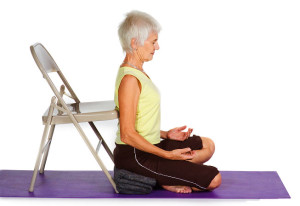
Relationships can be challenging especially when one partner has medical needs that need to be provided by the spouse. This puts great strain on a relationship and engenders a wide range of emotional responses from compassion, to guilt, to anger, to depression.
In a previous post we discussed how mindfulness training can be employed to help relieve pain http://contemplative-studies.org/wp/index.php/2015/07/17/mindfulness-the-pain-killer/. But, how does mindfulness affect pain in a social environment? In particular, can mindfulness in a caregiver make it easier to assist a chronic pain patient? In today’s Research News article “Spousal Mindfulness and Social Support in Couples with Chronic Pain”
http://www.ncbi.nlm.nih.gov/pmc/articles/PMC4013202/
Williams and colleagues explore this very question and find that spouses with high mindfulness were better caregivers.
When a spouse was high in mindful non-judging and non-reacting they were much less likely to meet a spouses behavior with negative responses. Spouses who mindfully act with awareness are perceived by the pain patient as more responsive, providing more support, and less negative. These characteristics are very important for maintaining a positive and supportive environment. Hence, the spouse’s mindfulness has a big impact on their ability to maintain an atmosphere conducive to effective assistance with chronic pain. It is always good to have empirical evidence, but the results here are not surprising. They fit with how mindful people act in general. They are more positive, empathetic, less critical and handle stress better.
Mindfulness has been shown to increase emotion regulation, the ability to feel emotions fully and to effectively respond to them. A spousal relationship, especially when taxed by one partner having a medical condition, can be full of emotion. For a healthy relationship these emotions must not be denied or suppressed but fully felt yet without allowing them to produce behaviors that would make things worse. This emotion regulation characteristic of mindful individuals may underlie why they can be effective caregivers.
Another stress of caring for a chronically ill person is that the caregiver can perceive the future negatively. It would be easy to catastrophize, by seeing things to be bad and getting worse leading to an intolerable situation. This could lead to a feeling of hopelessness. In addition, the interactions with the ill spouse can then be colored by the vision of a terrible future. Mindfulness, by focusing the caregiving spouse on the present moment and appreciating what is right in front of him/her can mitigate catastrophizing. This has been well documented in the research literature. This obviously would lead to better interactions and more effective caregiving.
Finally, caregiving can be very stressful. This can lead to negative emotions and can be detrimental to the caregiving spouse’s health. Since mindfulness training has been well documented to reduce responses to stress, both emotional and physical, the impact of the stress on the mindful spouse would be mitigated.
So, be mindful and have a better relationship even when your spouse is ill.
CMCS


